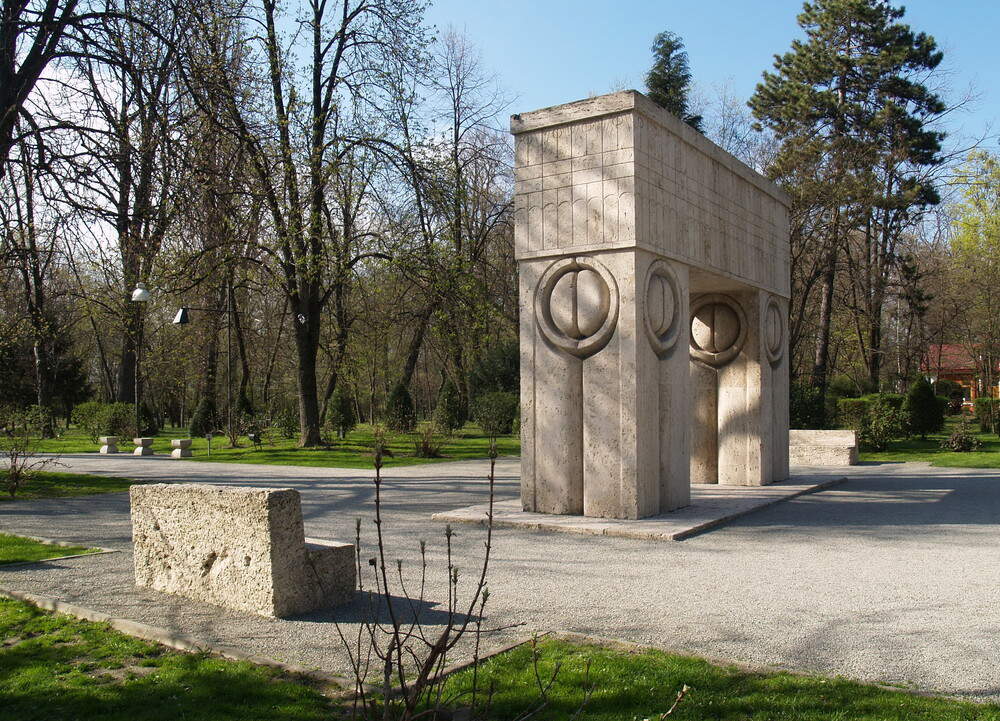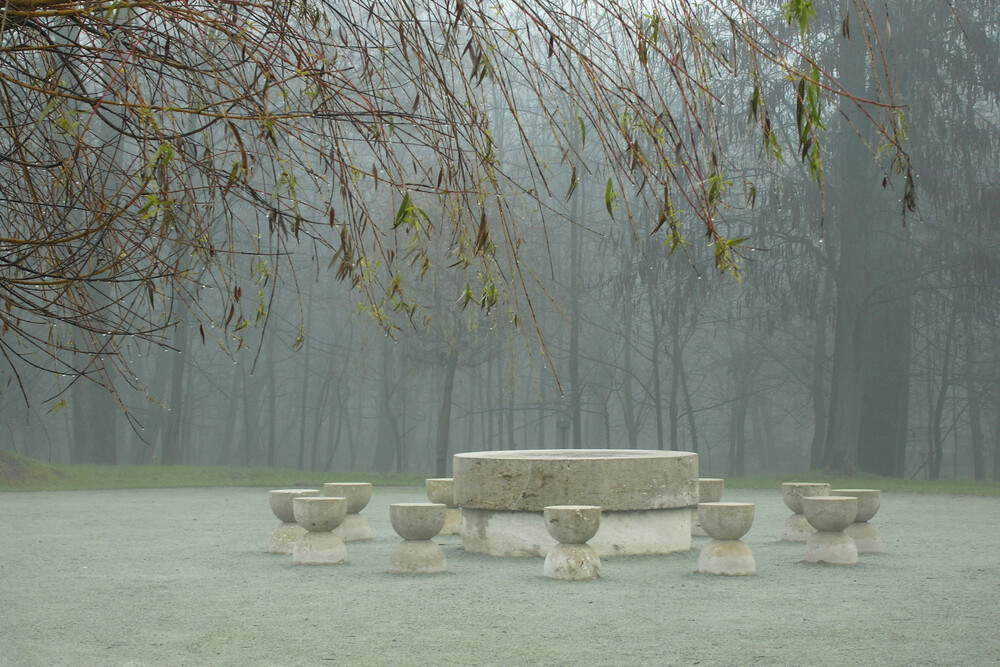Romania, Brâncuși monumental complex becomes World Heritage Site
Constantin Brâncuși becomes a UNESCO World Heritage Site: the monumental Târgu Jiu complex in Romania, The Path of Heroes, which the great pioneer of abstract sculpture created between 1937 and 1938, has indeed become a World Heritage Site: the sculptor’s home country therefore now has eleven heritages. The complex was created to commemorate the fallen during World War I and is located in two parks connected by the narrow Avenue of Heroes. The heritage includes the monumental complex of sculptural installations in Brâncuși and the pre-existing Church of the Holy Apostles Peter and Paul, located on the axis. “The extraordinary fusion of abstract sculpture, landscape architecture, engineering and urban planning conceived by Constantin Brâncuși,” UNESCO reasons, “goes far beyond the local episode of war to offer an original vision of the human condition.”
For Romanian heritage it is a "historic day,“ as the country’s culture ministry called it. The decision to include the Târgu Jiu complex came during the 46th session of the World Heritage Committee, meeting in New Delhi, India. The decision to include the complex ”represents recognition of the exceptional universal value of the masterpiece of monumental art created by the great Romanian artist in Târgu Jiu," says Culture Minister Raluca Turcan. “The recognition received today obliges us to provide due protection to the Monumental ensemble ’The Path of Heroes,’ to keep it intact for future generations and for the cultural memory of humanity. This is a commitment that our country makes at the international level, but it involves first of all an effort at the national level and, in particular, at the local level, in the city where it originated. The inscription of a cultural asset on the heritage list represents a moment of awareness of its absolute value, at the level of the whole society. The confirmation of the universal value of the cultural treasure left by Constantin Brâncuși in Târgu Jiu represents a moment of national pride and responsibility.”
The nomination file for the Calea Eroilor Monumental Complex (“The Path of Heroes”), created by Constantin Brâncuși in Târgu Jiu, was submitted by Romania in January 2018. After a waiting period due to causes outside the dossier - the proposed revision of the general procedure on how “sites associated with recent conflicts” can link to the goals and objectives of UNESCO and the World Heritage Convention - its evaluation was taken up by ICOMOS (International Council on Monuments and Sites - UNESCO’s advisory body) in 2023. As part of the nomination process, between July 19 and July 23, 2023, the technical assessment mission, organized by the Ministry of Culture through the Institute of National Heritage, took place in close cooperation with the local authorities of Târgu Jiu. The technical mission followed up on how the complex built by Constantin Brâncuși in Târgu Jiu meets the conditions of authenticity and integrity, the management of the cultural property, the involvement of the local community in the protection and enhancement of the complex, and its attitude towards the inscription on the World Heritage List. The assessment process continued with requests for further information and responses from Romania, as well as a technical meeting of the case coordinators with ICOMOS in Paris.




“The monumental complex, built between 1937 and 1938 to commemorate the supreme sacrifice of Romanians-soldiers, policemen and ordinary citizens-who died defending the town of Târgu Jiu during World War I,” reads UNESCO’s motivation, “represents a turning point in the history of monumental sculpture and public art. It is the seminal creation and the only large-scale public work by Romanian sculptor Constantin Brâncusi who, instead of placing the monument in the city, ’placed the city as a functional element at the center of the monument.’ [...] The monumental complex created by Constantin Brâncusi in Târgu Jiu represents an exceptional work, a fusion of abstract monumental sculpture, landscape architecture, engineering, and urban installation that offers a sequential, urban-scale commemorative experience with a strong symbolic value charged and marking an artistic expression of great strength and purity on multiple levels: artistic, symbolic, and spiritual. The combination of the artistic concept, exceptional quality of execution and engineering of the Endless Column, in particular, contribute to the completion of one of the most important monumental public sculptures of the 20th century.”
The monumental complex is aligned in a 1,500-meter-long axis called the Avenue of Heroes, where the Church of the Holy Apostles Peter and Paul also stands, with parks at both ends containing monumental sculptures: along the Jiu River are The Table of Silence, The Kissing Gate , and The Path of Chairs, while toward the east is the Column Park containing the Endless Column. The monumental complex, erected between 1937 and 1938, represents a turning point in the history of modern art, particularly modern monumental sculpture and public art. It is the seminal creation and the only large-scale public work by Romanian sculptor Constantin Brâncuși, who here demonstrated a perfect fusion of the disciplines of sculpture, architecture, engineering, and environmental and urban planning; a fundamental balance that has guided subsequent major works by artists, architects, and engineers.
 |
| Romania, Brâncuși monumental complex becomes World Heritage Site |
Warning: the translation into English of the original Italian article was created using automatic tools. We undertake to review all articles, but we do not guarantee the total absence of inaccuracies in the translation due to the program. You can find the original by clicking on the ITA button. If you find any mistake,please contact us.





























